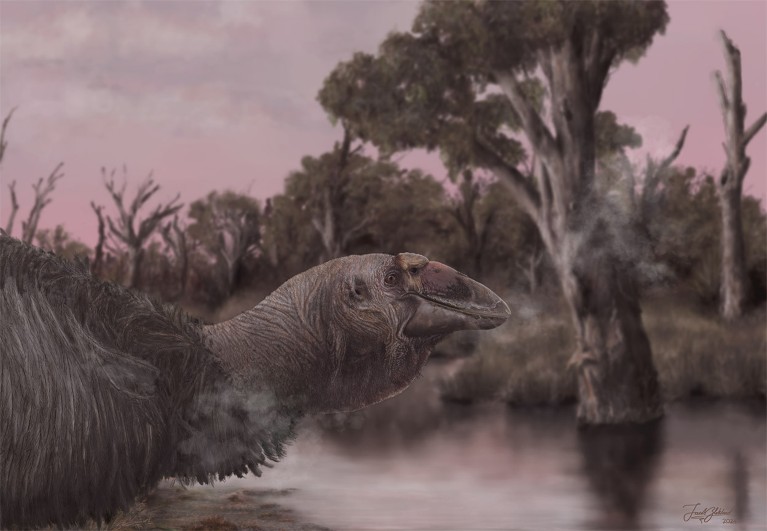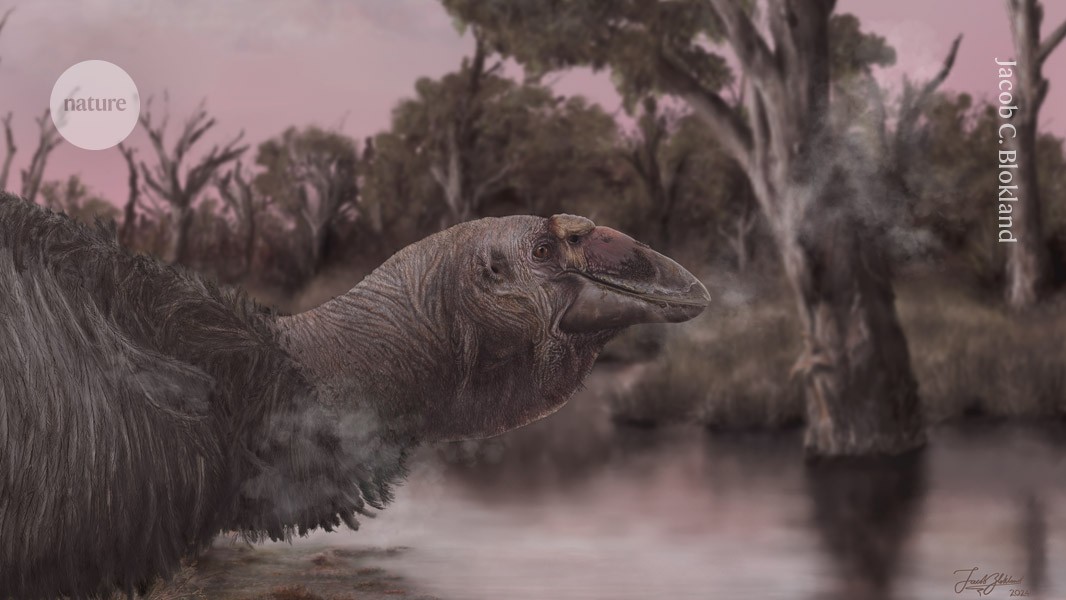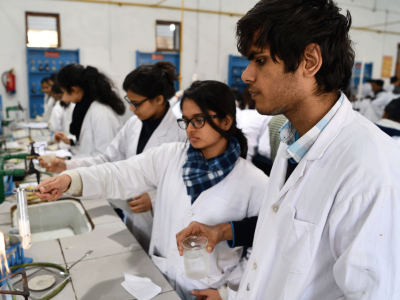
Manual reconstructions, such as this image of the extinct Australian bird Genyornis newtoni, can depict prehistoric creatures with more detail and veracity than artificial intelligence can produce, says illustrator Jacob Blokland.Credit: Jacob C. Blokland
Last year, a figure generated by artificial intelligence (AI) made it past peer review despite featuring gibberish text and a rat with enormous testes1. The scientific community took to social media to pan the paper, leading the journal concerned to retract it2. Yet scientists continue to turn to bots to make cover art and figures, and professional illustrators are expressing concern over the hasty adoption of AI.
Journals have different policies on publishing AI images. Owing to ethical and copyright concerns, Nature and Science do not permit them, barring specific cases, such as articles about AI. Elsevier adopts similar policies for its publications but allows AI images to be used for cover art, as long as all rights have been cleared. The American Chemical Society family of journals allows AI images in publications or cover art so long as the use of AI is explicitly acknowledged.
When the American Chemical Society launched this policy late last year, Rita Clare, a scientific illustrator in Boston, Massachusetts, voiced her frustration on the professional-networking platform LinkedIn. Clare argued that AI images don’t succinctly or accurately communicate scientific concepts and could undermine public trust in science. She says that certain inaccuracies wouldn’t fly if they were created by a person, “but for some reason, having this sheen of fake polish that comes with AI kind of erases all of those standards”.
Researchers rushing to meet a deadline might be drawn to inexpensive or free text-to-image tools, such as Midjourney or Stable Diffusion, that can swiftly produce cover art. Clare already feels the impact of AI on her career. “I’ve seen a decline in the number of people who have been reaching out to me,” she says, adding that she’s had to lower her fees to remain competitive. “It’s becoming increasingly more difficult to convince people to pay for art when they can just get it for free.”
AI also affects Ella Maru’s career as a scientific illustrator. Her studio, in Charleston, South Carolina, receives artwork requests from researchers who provide AI mock-ups of what they are looking for. “We treat these the same way we handle hand-drawn sketches — they help us understand the idea, but we always draw everything from scratch,” she says. Maru isn’t nervous that AI will put illustrators out of work, because, she says, AI-generated images still don’t live up to human-made ones. “We often create images to visualize new discoveries — and those are especially hard for generative AI to capture correctly,” she says. This is partly because AI is trained on existing publications and lacks the capacity to generate depictions of new concepts.
Clare says that the work of professional illustrators is more likely to meet customer expectations. “I send them sketches, I take all of their ideas into account, and I try to really bring to life what they have in mind,” she says. Clare adds that it is usually obvious when scientific artwork is generated using AI, and that this undermines the value of the study. Telltale signs of an AI image include oversaturated colours, a cinematic feel or hyper-realistic details. Clare’s view is that if researchers are prepared to spend thousands of dollars submitting manuscripts to prestigious journals, they ought to invest in professional cover art, too.
2024 Research Leaders
Although illustrators generally recommend against relying on AI for scientific artwork, some argue that it could make be a useful tool. Alexey Chizhik, a freelance scientific illustrator and a physicist at the Georg August University of Göttingen in Germany, says he sometimes cannot work out how to improve an illustration, and AI-generated images help him with brainstorming.
Maru says she might consider adding AI image generators to her toolkit one day. “Right now, we avoid all AI tools in our actual illustrations to fully follow journal guidelines, but if journals create clear rules in the future and allow certain uses, we’d be happy to explore that,” she says.
Clare plans to avoid using AI tools altogether. She experimented with Midjourney when it first came out and included an AI-generated background of a forest in a cover image for the journal Joule. Although she liked the result at the time, looking back, “it’s pretty obvious that it’s AI-generated”, she says. “I wish that I had just taken the time to make it myself.”
Prehistory and AI don’t mix
AI-generated imaginings of extinct species show how training data — many of which have no basis in actual science — can lead AI astray. In 2023, science-news website Earth.com reported on the discovery of an extinct animal, Mambachiton fiandohana, and seems to have used bot-made art to depict it. The image, which more closely resembled Godzilla than a real animal, was posted on social-media platform X by the North Carolina Museum of Natural Sciences in Raleigh.
The move was widely criticized by researchers, who said the species would have more closely resembled a crocodile, as was depicted by artist and physicist Nobu Tamura in San Francisco, California.



